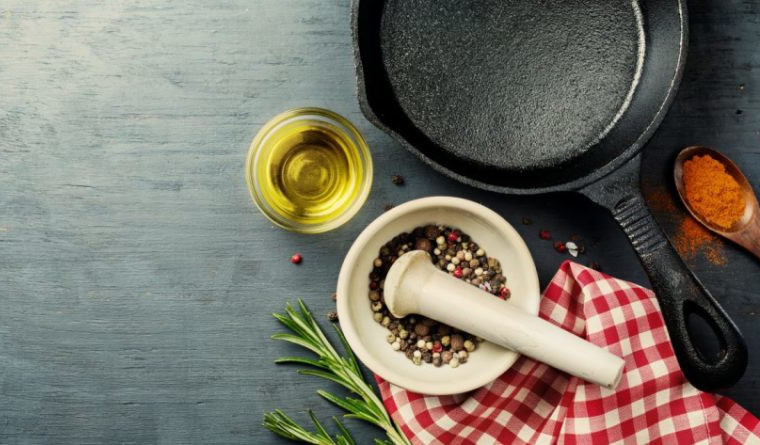Cast iron was the preferred material for cooking over an open flame or on a wood stove, as it could withstand high temperatures and distribute heat evenly.
During the 20th century, North America saw a surge in cast iron cookware production, with many foundries and manufacturers producing a wide range of cast iron products, including cookware, stoves and hardware. Many of these manufacturers, such as Griswold, Wagner and Lodge are still in operation today.
Cast iron cookware remained popular throughout the 20th century, but decreased in popularity with the inventions of non-stick coatings and lighter-weight materials. In recent years, cast iron has experienced a resurgence in popularity, as more people rediscover the benefits of cooking with it.
There are several health benefits, which are due to its unique properties and the way it interacts with food during cooking.
Cooking with cast iron can increase the amount of iron in your food, especially if you are cooking acidic foods like tomato sauce or lemon chicken. The iron from the cookware is leached into the food, assisted in absorption with the vitamin C foods mentioned as examples, providing a natural source of iron that can help prevent iron deficiency anemia.
Unlike non-stick cookware, cast iron does not contain any synthetic coatings that can leach harmful chemicals into your food. Cast iron is a natural, non-toxic cooking surface that is safe for use at high temperatures. Cast iron heats evenly and retains heat well, which means that you can cook your food more evenly and at a lower temperature. This can help preserve the nutritional value of your food and reduce the risk of overcooking or burning.
This cookware can be used on the stovetop, in the oven and even over an open flame. This makes it a versatile cooking tool that can be used to prepare a wide variety of dishes. I personally prefer it used outdoors on a side bbq burner for searing meats or veggies (like cauliflower steaks) before placing on the grill. With proper seasoning and care, cast iron cookware can develop a natural non-stick surface that is free from synthetic chemicals. This can help reduce the amount of excessive oils and fats often overused for cooking, making your meals healthier and lower in calories.
Cast iron cookware is durable and long-lasting, which means that you won’t have to replace it as frequently as other types of cookware. This can help reduce waste and save you money in the long run. Avoid soaking your cast iron cookware in water or leaving it to air dry, as this can lead to rusting. Use wooden, silicone, or nylon utensils to avoid damaging the surface caused by metal utensils.
Choosing your cast iron piece should be customized to the weight of which you can carry as they are heavy. Manufacturers produce sizes from mini to large. Be prepared to handle with care as the handle will be hot.
Take care in your kitchen and enjoy the benefits of its properties for you and your loved ones!




